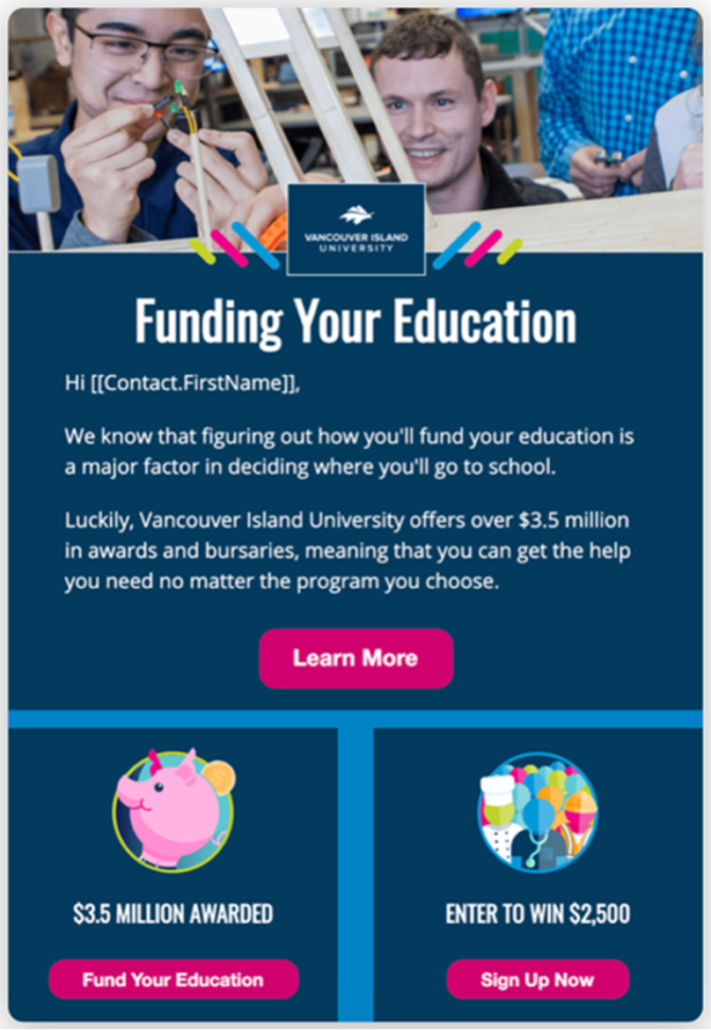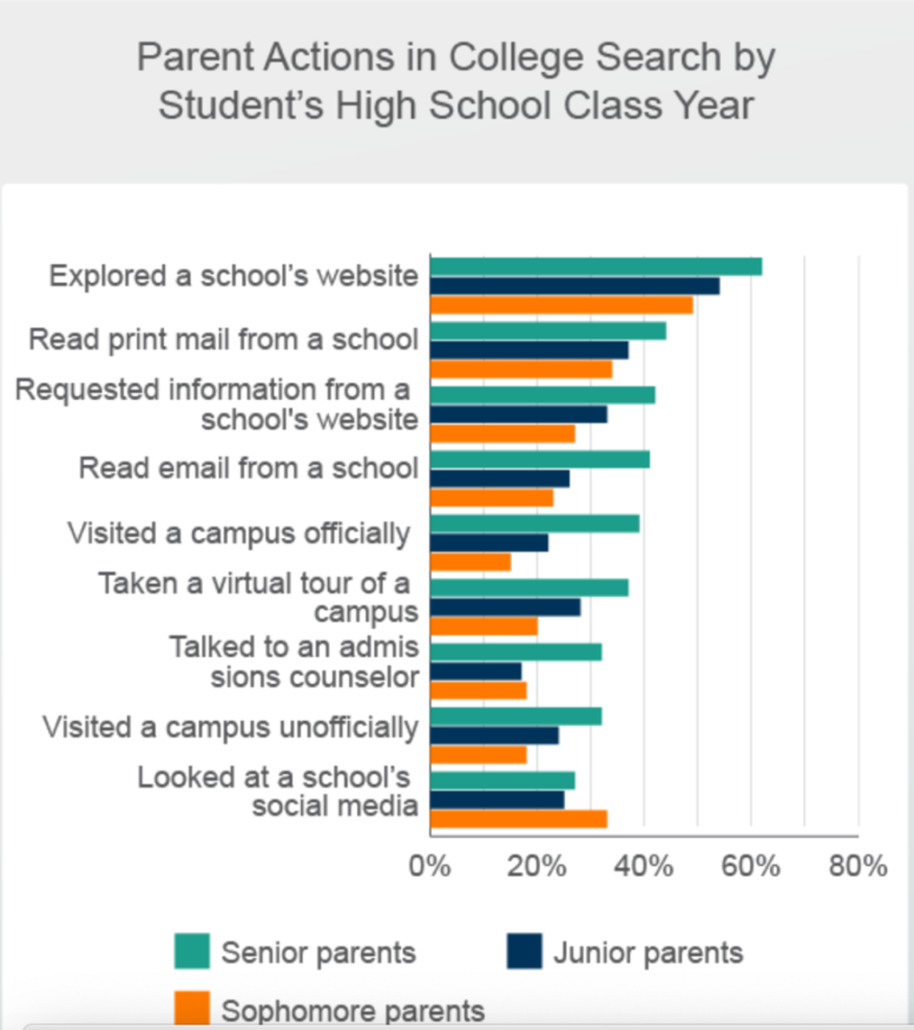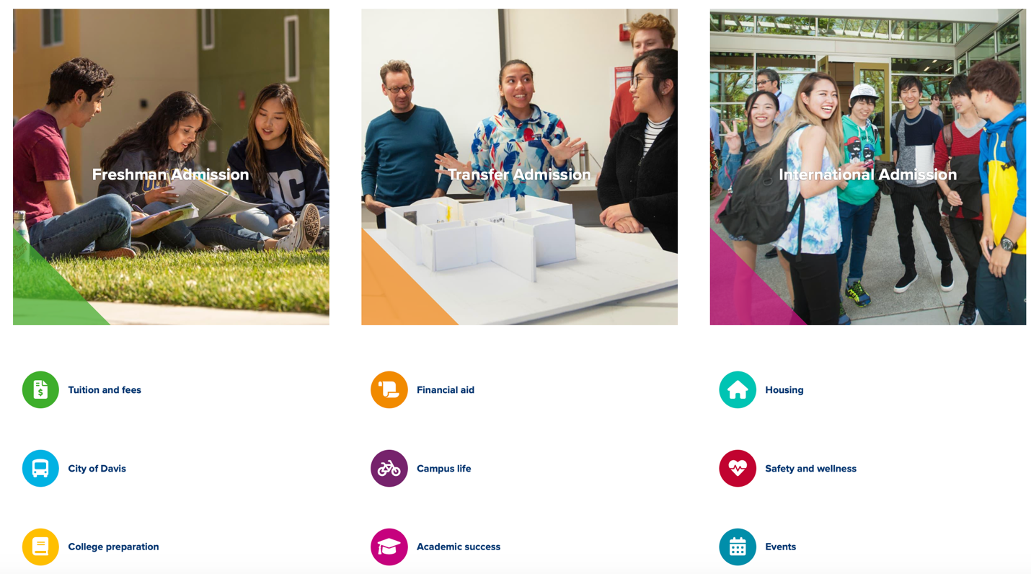Schools need a smart parent outreach strategy to sustain enrollment growth. As students’ strongest influence—more than 50% of parents identify as equal partners in the search process—parents can serve as powerful recruitment partners.
To inspire parents toward enrollment, schools must:
- Build strong, trusted relationships
- Provide content tailored to parents’ needs
Let’s examine some tips and tactics for achieving both.
Who are today’s parents?
While parents differ by demographic factors and geographic region, most share several key similarities:
- Parents are older than in previous generations
- Parents are more highly involved in the college selection process
Today’s parents are also more anxious—a trend that fuels parents’ high level of involvement. According to Eduventures and Mongoose Research:
- 90% admit to contacting colleges on their child’s behalf
- 62% have completed a college application
Parents are key influencers
Parents are prospective students’ most important influencers. Studies demonstrate prospects who submit inquiries using parent email addresses are 45% more likely to apply.
“Parents continue to be the biggest outside influence for most students—and we’re finding many are exerting greater influence when it comes to their child’s college decision.“
Jeremy Tiers, Senior Director of Admissions Services for Tudor Collegiate Strategies
Parents are typically most influential at the beginning of the process, helping students research and select potential schools. According to Eduventures’ 2021 Prospective Parent Survey, one out of three parents also want to hear from institutions when just starting the college search—ideally during sophomore year.
Reaching parents earlier in the process also helps:
- Build trust over longer periods of time
- Garner attention during a less stressful time
- Alleviate potential anxiety
6 strategies for communicating with parents
1. Emphasize value
Per Longmire and Company’s Value Proposition survey, just one-half of students and parents nationwide are confident money spent on college the first year will be worth it—and only 20% say schools addressed how to maximize time and investment.
To build a persuasive case for enrollment, schools must lead with value. Consider emphasizing both return on investment (ROI) and successful student outcomes.
Strategies might include:
- Distributing a student outcomes one-pager during campus visits
- Leading with ROI data when discussing financial aid
- Structuring marketing copy around the value proposition
- Publishing parent testimonials illustrating ROI
- Connecting prospects with successful alumni
2. Create targeted content
To effectively reach parents, create marketing content that speaks directly to pain points and needs. Most parents seek information about the following four topics:
- Quality—including school rankings and details on majors
- Cost—especially financial aid opportunities
- Student experience—such as housing and extracurricular offerings
- Logistics—like application deadlines
Sending content directly to parents is ideal—but keep in mind parents often read college materials for their children, too. Consider centering content strategy for both students and parents around the above four points.

Vancouver Island University addresses cost concerns by emphasizing the amount of financial aid available. The school stresses aid is available for any program—and even includes a participatory contest.
3. Utilize multiple channels
Consider taking a multichannel approach, which ensures parents hear from schools on different platforms. A combination of both active (texting, email, phone) and passive (web, print) communications is ideal.
Eduventures’ research illustrates which channels are most effective—and for whom.

Schools should consider prioritizing a combination of top performing channels, including:
- Website
- Emails
- Print mail
- Campus visits
Texting is also a proven parent outreach tactic, with 68-74% of parents indicating an interest in receiving SMS texts. For ideas and best practices for SMS texting in higher education, check out A Guide to Creating Smart SMS and MMS Campaigns.
4. Create web pages specifically for parents
A school’s website is by far the most effective channel to reach parents, with up to 80% of parents visiting sites in support of students. To best meet parents’ needs, consider creating separate parents and family sections on your website.
Ideally the parents and family page speaks to parents’ four main pain points—quality, cost, experience, and logistics.
Take UC Davis’ Parents and Families page as an example.


UC Davis addresses parents directly and affirms their value. The webpage features easy-to-access details on school cost and financial aid; student experience (campus life, events); quality (academic success, college prep); and logistics (safety, housing). UC Davis also provides three separate information options based on the type of student: freshman, transfer, or international.
UC Davis also leverages video testimonials—an especially persuasive higher education marketing tool—to build credibility.
The 2-minute video features a variety of parents sharing their experiences with the school. Parents discuss the campus environment, the surrounding town, academic culture, and more.
Additional parents and families page content could include:
- Frequently asked questions
- Contact information for admissions, financial aid and/or housing
- Important admission dates
- A sign-up form to receive regular updates/information
5. Tailor tours and events to parents
Campus visits, both in-person and virtual, are also effective parent relationship-building tools. Face-to-face meetings and discussions help build trust and allow schools to address questions in real-time.
Consider offering separate campus tours for students and parents. Parent-only tours offer the chance to highlight aspects of the campus that may be most appealing to parents, and shape perceptions on affordability, student outcomes, and other key areas.
Schools might also consider offering programming as a resource to parents. Potential ideas include:
- Financial aid webinars
- Workshops on navigating the college search process
- FAQ sessions
- Prospective parent meet n’ greets
6. Collect parent information at each touchpoint
Train staff to archive parent information at each interaction, including one-off emails and phone calls. Students can also help by sharing parent contact information, but schools should avoid relying wholly on prospects.
One proven tactic is using a parent-specific Request for Information form (RFI). The RFI form can be embedded on a school’s website, helping collect key parent information including:
- Name
- Email address
- Phone number
- Opt-in permission to email and SMS marketing
Make sure your RFI form is mobile-friendly: up to one-third of parents report completing forms on a mobile device.
Schools might also consider hosting a parents’ email group (similar to a listserv). Take Rowan University’s Parents Connection Email Group for example.

Rowan offers parents a secure and exclusive way to receive campus news and updates. The sign-up form is located on Rowan’s parents and family webpage.
Sharpen your communications
Prioritize details. Communicate with as much detail as possible. Specificity can help mitigate parents’ anxious mindsets—and save valuable time for schools down the road.
Address parents directly. Take a hands-on approach with parents. Provide parents with targeted information as much as possible, and clearly communicate content is intended to address concerns.
Use parents to get students excited. Excitement and enrollment are highly correlated. Help build excitement by emphasizing positive student experience. Be sure to provide experience-based content, such as hand-outs on clubs or housing life, for parents to share with students.
Hone your strategy
When reviewing your parent outreach strategy, consider the following to fine-tune your approach. Remember effective marketing strategies evolve and should be consistently evaluated to optimize results.
- Audit communications. Start with where you are. Review past and current approaches to communications: Which mediums are most effective and which campaigns have garnered the best response?
- Evaluate content. Dig into metrics. Based on your content’s performance, what do parents want to know? When is communicating most effective?
- Start simple. As with any marketing effort, begin small and scale. Choose a handful of tactics to start and draft a plan for growth over time.
- Measure and re-evaluate. The audience changes constantly. Consider setting a regular cadence for a performance review to evaluate the audience and tweak the content strategy.
Strategic parent outreach can help schools elevate enrollment and build lasting relationships with families. Through targeted and thoughtful content, schools can inspire parents—and prospective students—toward enrollment.









